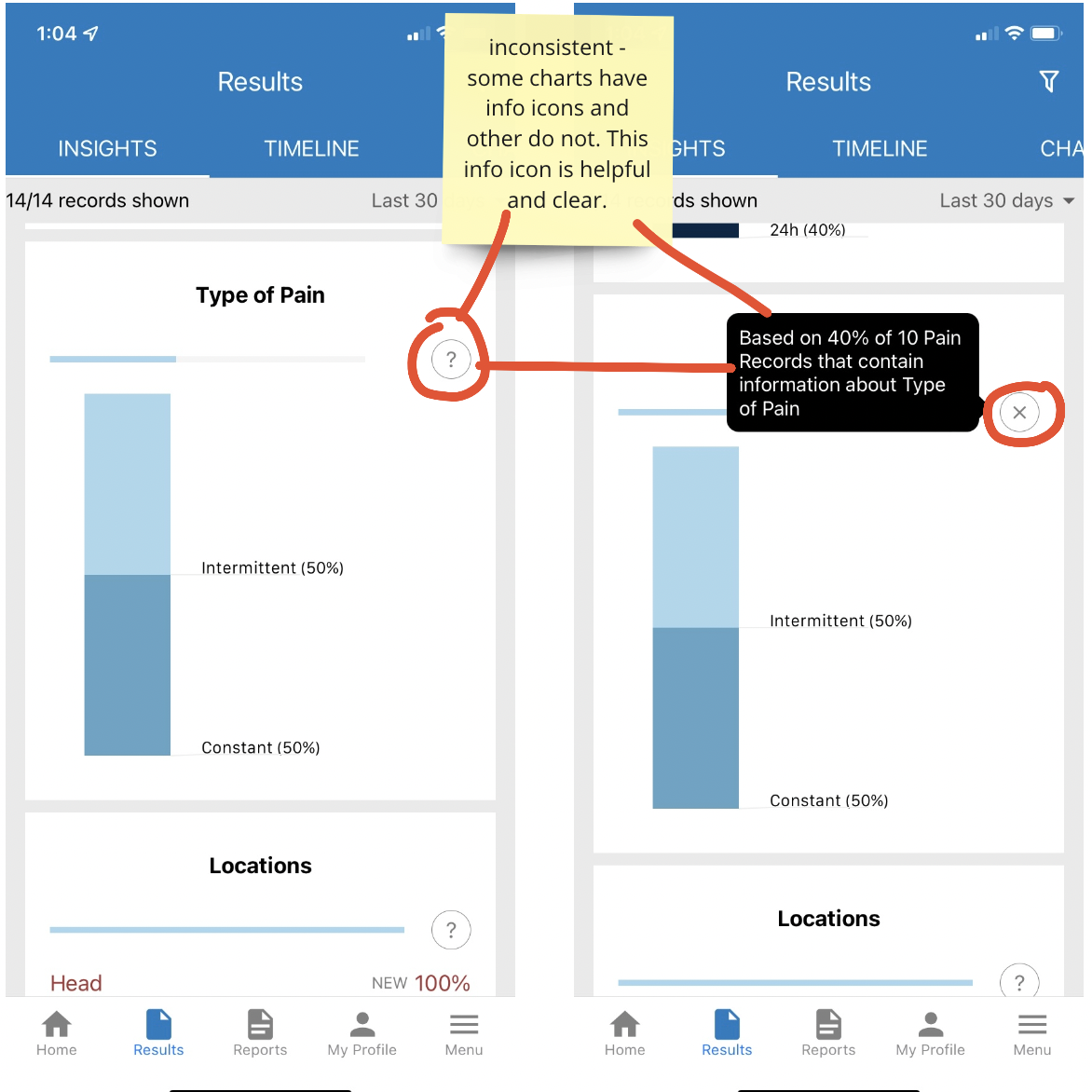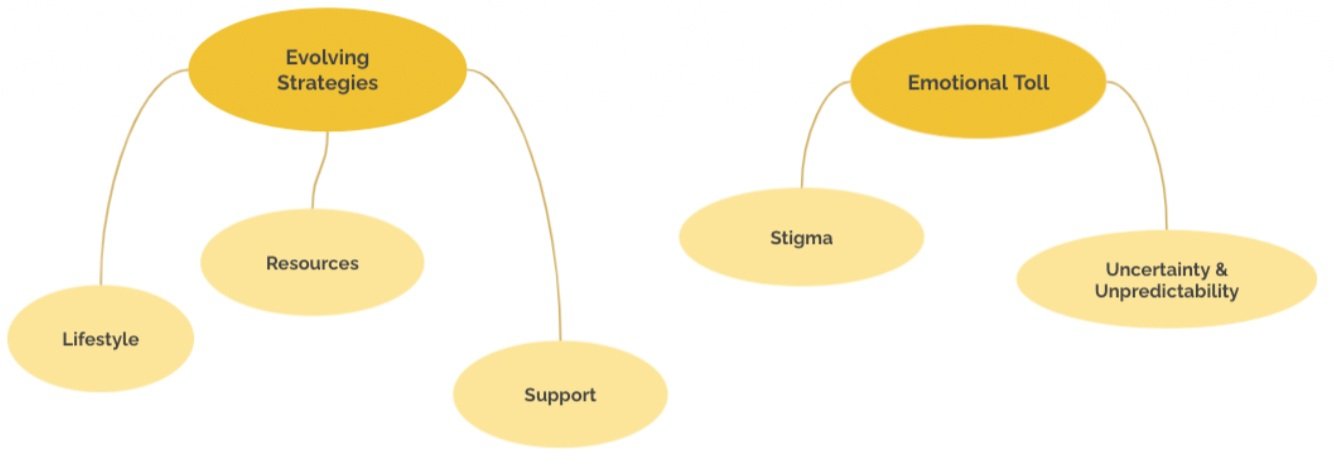Discovery Research for a New Venture
Goal:
The goal of this generative research project was to understand how people who have been diagnosed with ongoing or chronic health conditions manage their illness. The client was looking to expand into a new space beyond their current offerings of discount drug coupons for greater retention and lifetime value.
Process:
Through heuristic evaluations of competitors, interviews with users, and a usability test the team gathered a holistic picture of the illness management and chronic illness journey to help the client expand its offerings.
Screenshot of competitors application and the heuristic evaluation comments.
Role:
UX Researcher
Responsibility:
Each team member was equally responsible and involved; however, I was particularly involved in the interviews, report writing, and competitive analysis.
Methods:
Heurtistic evaluation, competitive analysis, in-depth interviews, and usability testing,
Process
This research project can be broken down into two phases:
Understanding the current customer journey
Heuristic evaluations of competitors
In-depth interviews and usability tests
Phase 1: Understanding the current customer journey
In order to determine the direction of research, it was critical to understand the customer journey and offerings. Through interviews with the client, we were able to see their current personas, user journeys, and where users fell out or left the app. This helped us understand the direction of focus and the current gaps.
Phase 2: Heuristic evaluations of competitors
Since the current application did not have any resources or space to support long-term illness management, the team decided to tackle different applications that are in the space of managing illness to better understand offerings and areas the client can explore for their future product. We decided to run heuristic evaluations on the clients’ app as well as three other key industry apps to gather initial pain points and insights across the health industry. This gave us a broad look at what products are available and their value to users who are managing illnesses. The apps selected included sites that help pain management/tracking, illness diagnosis and management, and drug interaction checkers. The team evaluated the apps based on their key tasks and flows.
We presented the findings from the heuristic evaluation to the client mid-way through the project. We wanted to ensure the findings matched the project expectations and determine if there were any areas we could dig deeper.
Heuristics and the rating scale used to evaluate competitors and the client’s app.
Phase 3: In-depth interviews and usability tests
The heurtistic evaluations and analysis of the key tasks helped us determine what was important to users when managing a long-term illness. The next step was to interview real people who have one or more chronic illness to verify our findings. The goal was to understand how they currently manage their illness, what is missing, and other issues having a chronic illness presents. In the same session, we also conducted a usability test with the client’s current app to see if there were any aspects that satisfied the needs of someone with a chronic illness.
Sample questions asked during the interview:
Can you walk us through a typical week or month in your life having to manage your illness or helping your patient manage it?
How often do you reach out to friends, family, or community for support, if any? If you don’t reach out, how would you like them to support you?
When are you most often in need of support? Right after diagnosis, a few months after, years after (if relevant).
Do you currently use any app that helps you track your medications, find discounts, or anything else involved in prescription medicine?
If so, could you please describe the app you use.
If not, what type of features would you like for the management of your illness?
Discovery research thematic results on how to manage long-term illnesses.
Limitations & Constraints
This project did face a few contraints and challenges:
This project was meant to be fully exploratory; however, due to specific needs we had to include a usability test. While this did prove to be valuable for the client in the end, it added an extra layer of complexity. If this project was solely exploratory, there is a possibility that we would have learned more about chronic illness and the management of long-term illnesses.
The main project manager from the client unexpectedly left the team at the beginning of the project. Some base knowledge left with her which may have impacted the direction of the project.
Outcome & Reflection
Ultimately, we presented the team with four heuristic evaluations of competitors and data from eleven people who struggle and manage a chronic illness. The client was delighted by the data and inspired to begin a build out of a more holistic product that can support users from diagnosis to treatment.
This project was insightful and astounding. Chronic illness is a prolific problem in the United States and it was heartbreaking to hear about the lack of understanding and hopelessness some people feel. Working on this project was important and inspiring. I was proud to be a part of something that may make someone’s life easier while dealing with impossible challenges.


